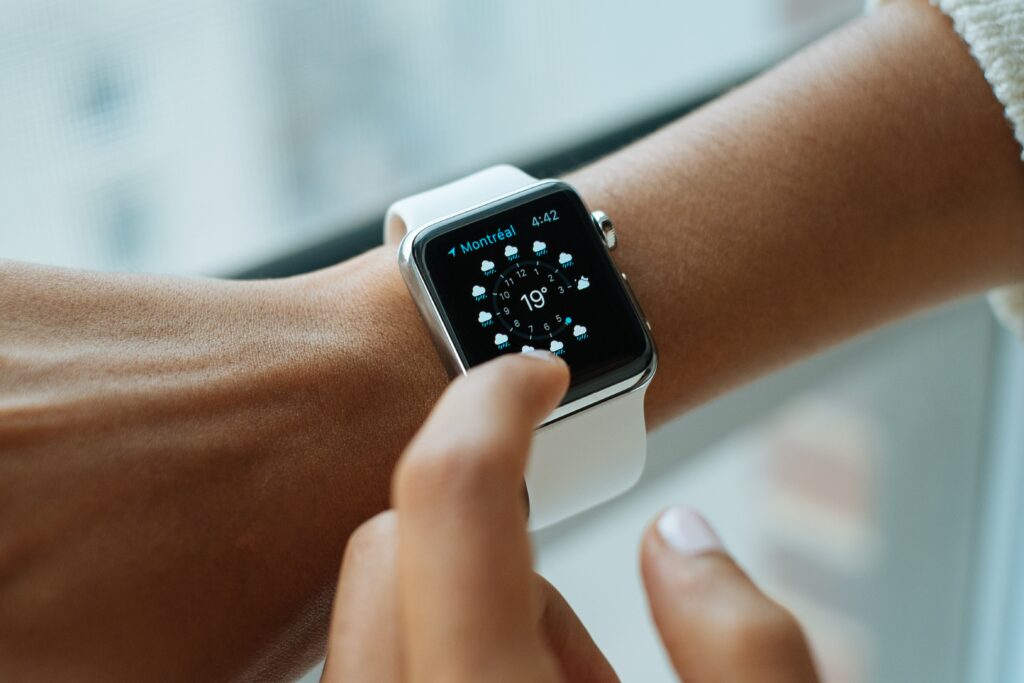The futuristic features that can take wearable tech to the next level
Smartwatches and wearable technology have sharply increased in popularity in recent years. That said, which features should developers look out for to maximise their devices and technology?
Research provided in a new report from IDTechEx outlines the trends that could inform wearable fitness for years to come. For one, IDTechEx cited running as being one of the most popular activities that’s tracked by motion sensors in watches. Motion sensors are used to track the distance and speed covered by a runner, which is often aggregated with heart rate data to highlight calories burnt or level of effort.
Wearable tech to reach new heights
It has been said that these systems are effective in measuring two dimensions of overall movement, yet there is room for improvement when gauging movements regarding a runner’s height. “Changes in the height of a watch are crucial for monitoring many exercises and movements”, notes IDTechEx. “Moreover, consider the impact of gradient during running or climbing that is too subtle to be determined using GPS”.
This technology is already being developed by industry giants like Apple, who along with third-party app developers are implementing software that will allow users to input motion data. Optimising the height of wearables is considered to be a gap in the market that companies are willing to capitalise on. Bosch Sensortec have been noted for adding a miniaturised pressure sensor to their suite of micro-electromechanical systems for wearables. This technology is able to detect changes in height, and can apparently be integrated into wrist-worn devices.
E-textiles key for more aggressive contact sports
Research has indicated that a large number of amateur and professional athletes are opting to not wear smartwatches, as it could be perceived as dangerous in a contact sport such as rugby. To solve this concern, it is important for developers to innovate in technology such as e-textiles. Start-ups, major companies and universities are all reportedly developing textile fabrics with built-in technology.
“Conductive components embedded within clothes have shown promise for the measurement of heart rate and activity level, alongside other biometrics valued in the wellness and even healthcare space”, note IDTechEx.
Developing e-textiles is not without difficulties. Obstacles for smooth development include cost and durability. That said, the gap in the market for e-textiles could be too lucrative to ignore. Research has pointed out that buyers are willing to spend more on sport-specific equipment, with kits related to their supported club. It has also been noted that professional footballers are increasingly using similar e-textile products, normalising this technology for mass audiences.
Reports indicate that “the most promising companies” are developing components for e-textiles, which in turn could be mass-manufactured on the market. Products like smart shirts could also prove effective in boosting a company’s brand. “As early-stage companies focus their energies on scaling up and collaborating with big-name brands, it wouldn’t be surprising if we see high-end smart shirts for the prosumer emerge onto the market within the foreseeable future”, the report predicts.

Wearable tech’s impact on healthcare
It is impossible to ignore the prospective impact of wearable technology in the healthcare industry. Wearable electrocardiogram monitors have been noted as a key innovation in this space. Heart health monitoring devices are expected to increase in popularity as more and more older audiences embrace technology to treat illnesses.
According to a survey conducted by healthinsurance.com, 60% of Medicare-eligible seniors said they had embraced technology more amid the pandemic in the US. The Withings Move ECG smartwatch launched in 2019, leading the way for developers to enjoy a promising future with similar products.

